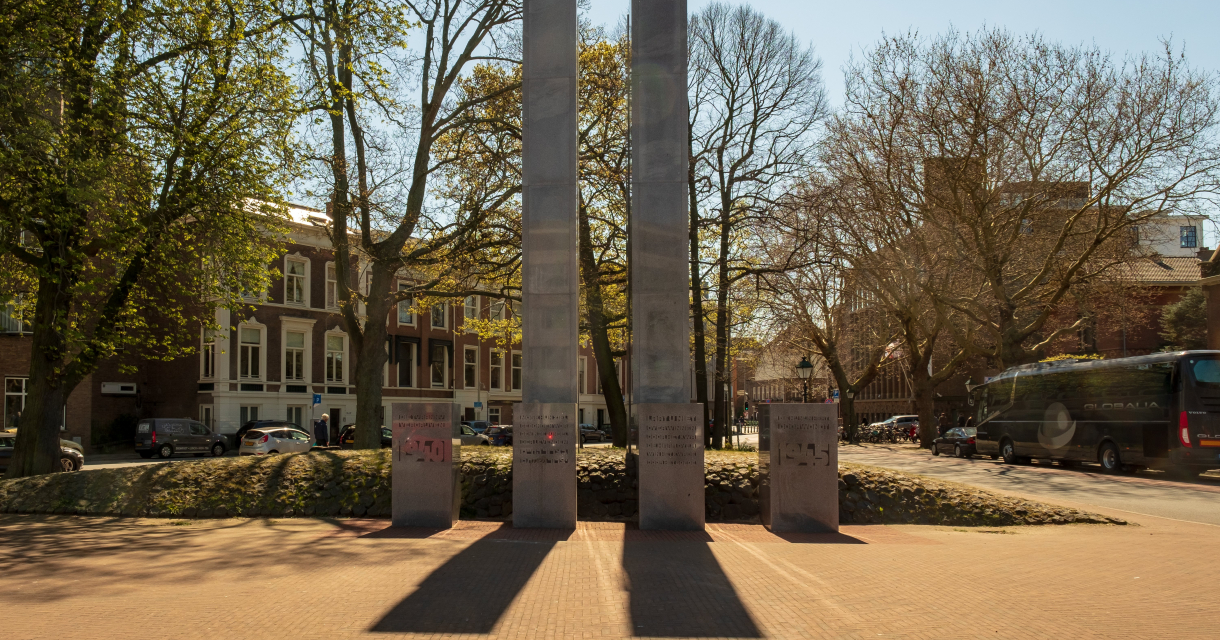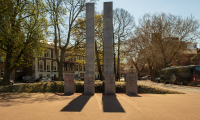
Across from the Peace Palace, a location in The Hague that is all about peace, you will find The Hague War Monument 1940-1945. It reminds the residents of The Hague that almost 20,000 fellow citizens perished due to war violence during the years of occupation.
The Hague war victims
All elements of The Hague society suffered war victims. Apart from the Jewish community, around 800 residents of The Hague died due to war violence. Around 200 of them fell in the early days of the war and another 520 perished in the Bezuidenhout bombardment on 3 May 1945. On top of that, around 500 died in the resistance and over 2,100 did not survive the hunger winter of 1945.
Jewish community
Prior to World War II, The Hague was home to the second largest Jewish community in the Netherlands. One in thirty residents of The Hague had Jewish roots. When the war broke out, The Hague had a Jewish community of over 17,000 men, women and children. Between September 1942 and May 1943, the majority of Jews was deported from The Hague to concentration camps. Around 12,000 Jews from The Hague were murdered during the war.
Monument
The monument was created by Jewish sculptor Appie Drielsma after an initiative by former resistance members. He survived the war as a boy by going into hiding. A lot of his work would later incorporate that traumatic experience. The monument consists of four columns. These columns symbolise the four groups in society at the time of World War II: neutral, Catholic, protestant and Jewish.
A stone across from the monument reads:
“A royal and governmental capital, The Hague was targeted by air strikes as early as 10 May 1940, the first day of the treacherous attack on the Netherlands. The first devastation took place and the first victims fell. As a result of war and the occupation, almost twenty thousand of our fellow citizens would lose their lives between May 1940 and the liberation in May 1945 as soldiers, members of the resistance, deported, forced labourers, prisoners in a penitentiary or concentration camp, as victims of bombardments and the last hunger winter and especially those persecuted for their race and religion. Among the latter, over six thousand Jewish fellow citizens who did not survive the extermination camps. This monument is to commemorate without discrimination those who have paid with their lives for the delusions that gave rise to national socialism. It silently calls for vigilance against the drives in the human psyche that have the potential to feed such delusions and can lead to such dehumanising political systems. In that sense it is a reminder for generations to come.”
The monument reads the following:
“Those who drive away tyranny – 1940 – may their souls be bound in the bundle of the living – do not allow evil to prevail over you, but prevail over evil with the good – that tries us, 1945”

